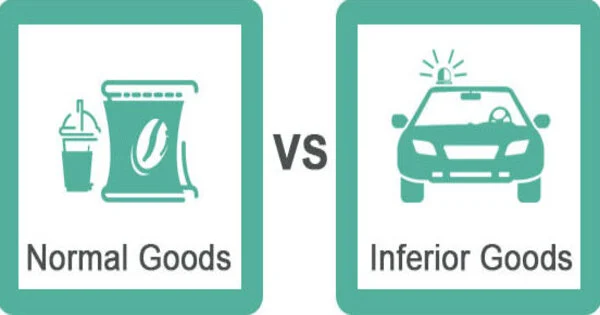The amount of a commodity that a customer demands can rise or fall in response to an increase in earnings, depending on the commodity’s characteristics. For most commodities, the amount picked up by a customer increases as the customer’s earnings rise and decreases as the customer’s earnings fall. These are referred to as normal goods. Demand for a few commodities moves in the opposite direction of the customer’s earnings. These items are referred to as inferior goods. As the customer’s earnings rise, demand for inferior goods falls, and as earnings fall, demand for inferior goods rises. Low-quality food items such as cereals are examples of inferior goods.
The demand function is a relationship between the consumer’s demand for a good and its price when other factors are considered. Instead of studying the relationship between the demand for a good and its price, we can investigate the relationship between the consumer’s demand for the good and the consumer’s income.
Depending on the nature of the good, the quantity demanded by the consumer can increase or decrease as income rises. For most goods, the quantity that a consumer chooses increases as the consumer’s income increases and decreases as the consumer’s income decreases. Such items are known as normal goods. As a result, consumer demand for common good moves in the same direction as consumer income.
However, there are some goods the demands for which move in the opposite direction of the income of the consumer. Such goods are called inferior goods. As the income of the consumer increases, the demand for an inferior good falls, and as the income decreases, the demand for an inferior good rise.
Examples of inferior goods include low-quality food items like coarse cereals. A good can be a normal good for the consumer at some levels of income and an inferior good for her at other levels of income. At very low levels of income, a consumer’s demand for low-quality cereals can increase with income. But, beyond a level, any increase in income of the consumer is likely to reduce her consumption of such food items as she switches to better quality cereals.
A commodity can be a normal commodity for the customer at some levels of income and an inferior commodity at other levels of income. At very low levels of earnings, a customer’s demand for low-quality cereals can rise in tandem with earnings. However, after a certain point, any increase in the customer’s earnings is likely to reduce his or her consumption and utilization of such food items as they switch to higher-quality cereals.
When consumer income levels rise, demand for normal goods rises while demand for inferior goods falls. When prices are low, consumers may prefer normal goods, but when prices rise, they may prefer inferior goods. Normal goods can include products such as name-brand products and personal vehicles, while inferior goods may include canned foods and public transit options.
















